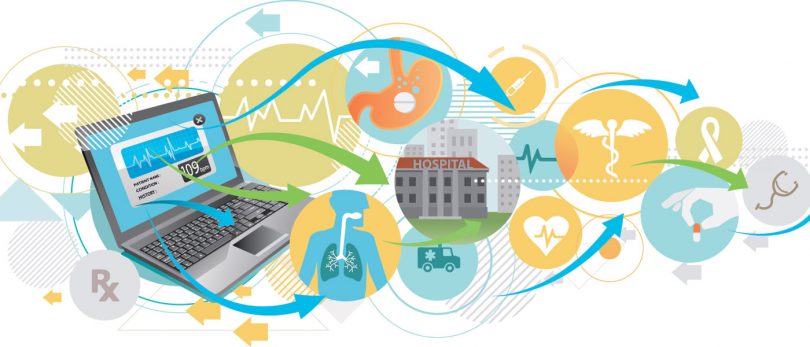Today’s generations have different philosophies about healthcare. “We can no longer limit ourselves to thinking that healthcare only means a one-on-one relationship between patient and primary care provider. There’s a segment of our population who still wants that relationship, but our younger generations want convenience,” explains Alan Miller, MD, president of the UHS Medical Group. “We have adapted to these generational changes in order to provide our patients the best possible care in the most efficient way.”
Bridging the Generation Gap
Changing with the times began by identifying each generation’s healthcare delivery preferences.
- Mature/Silents, born before 1946, typically prefer a one-on-one relationship with a primary care provider and rely on this one provider for healthcare information.
- Baby Boomers, born between 1946 and 1964, generally favor a relationship with their primary care provider. However, they also rely on the internet to connect with their providers and aren’t opposed to the convenience of a walk-in clinic.
- Gen-Xers, born between 1965 and 1981, and Millennials, born between 1982 and 2000, want fast, easy and cost-efficient access to healthcare. “It’s about being seen when they want to be seen and less about a provider/patient relationship,” Dr. Miller says.
UHS is adapting to these generational differences by shifting to a healthcare approach that negotiates all channels of care and uses a collaborative medical team — including primary care providers, nurses, wellness coordinators, care coordinators, clinical staff and office personnel — to deliver coordinated care. A patient’s UHS electronic medical record (EMR) helps to keep the healthcare team informed while providing linked information.
Connecting the Dots
This medical model works most effectively and efficiently with a primary care provider at the center of care, explains David E. Kwiatkowski, MD, a family medicine physician and medical director of the UHS Medical Group. “Establishing a relationship with a primary care provider is something we strongly encourage UHS patients to do.”
From the primary care provider outward, the evolving model of medical care uses teamwork and technology to drive continuity of care and promote preventive care.
When a patient’s primary care provider is unavailable, a triage nurse steps up. “Providing your medical situation does not warrant going to the Emergency Room, the nurse may suggest an office visit with your primary care provider’s colleague or recommend a UHS Walk-In Center,” Dr. Kwiatkowski says. “In either case, the attending medical practitioner has full access to the patient’s electronic medical record to promote continuity of care.”
UHS has three conveniently-located Walk-In Centers, which require no appointments, provide onsite diagnostics such as X-rays and blood draws, as well as easy access and ample parking. Like traditional walk-in clinics, services focus on diagnosing and treating a broad range of non-life-threatening medical problems, such as cuts, coughs, fevers, flu, ear infections and vomiting.
However, UHS found the conventional retail walk-in clinic formula lacking and initiated improvements. For example, UHS Walk-In Center physicians, physician assistants and nurse practitioners can communicate directly with a patient’s primary care provider. “Let’s say you go to a walk-in with a sore throat and during the examination we see that your blood pressure is elevated,” Dr. Kwiatkowski explains. “Our system alerts the patient’s primary care provider to follow up with the patient, which introduces a potentially life-saving layer of care that retail clinics cannot provide.”
Care coordination is also key to the team approach. Nurse care managers work alongside primary care teams. “They phone patients when it’s time to schedule a screening or annual exam, which is key for preventive health,” says Dr. Kwiatkowski.
In addition, wellness coordinators work with patients through their primary care provider’s offices to help them navigate the medical system. They help patients resolve barriers to care, such as insurance, nutritional needs and transportation to and from medical appointments. They also identify patients with chronic conditions, such as diabetes or hypertension, who are behind on testing or visits.
“Our wellness coordinators are also aware of the resources available in our community and have dramatically changed the care we’re able to provide to our patients,” Dr. Miller says. For example, wellness coordinators help connect patients to a variety of support groups, educational programs and events that help patients avoid disease and injury and promote healthy lifestyles.
“UHS has created an all-encompassing effort,” says Dr. Kwiatkowski. “It starts in the primary care provider’s office, but it’s not just the clinical staff and the provider. The big picture includes our wellness coordinators, RN care managers, Walk-In Centers and leading-edge technology — working together to keep our patients and our community healthy.”
A clear picture
“Telehealth is another way we plan to improve the continuum of care for our patients’ health,” says Alan Miller, MD, president of UHS Medical Group. Telehealth involves speaking to the appropriate medical practitioner over the Internet to receive healthcare, health information or health education at a distance. Think Skype or FaceTime.
UHS is currently developing a pilot program, projected to debut in 2018, which will allow e-visits between patients and providers as well as provider-to-provider. “The goal is to promote virtual consultations between our rural health offices and UHS specialists, so every provider has access to every UHS resource,” Dr. Miller adds.
When to walk in
UHS Walk-In Centers provide a valuable avenue for quality medical attention without an appointment. Here are general guidelines for when a walk-in center is the right choice:
- When you prefer the convenience of a Walk-In Center.
- When your primary care provider is unavailable.
- When you are feeling ill or hurt but there is no immediate, serious threat to health or life that requires Emergency Room services.
- When your schedule doesn’t fit a typical primary care office appointment.
UHS now posts Walk-In Center waiting times online. To promote further convenience, patients will soon be able to phone ahead and “get in line” for a UHS Walk-In Center visit.
FIND DR. RIGHT
Find a walk-in center or primary care provider online, or call Nurse Direct at 763-5555.







